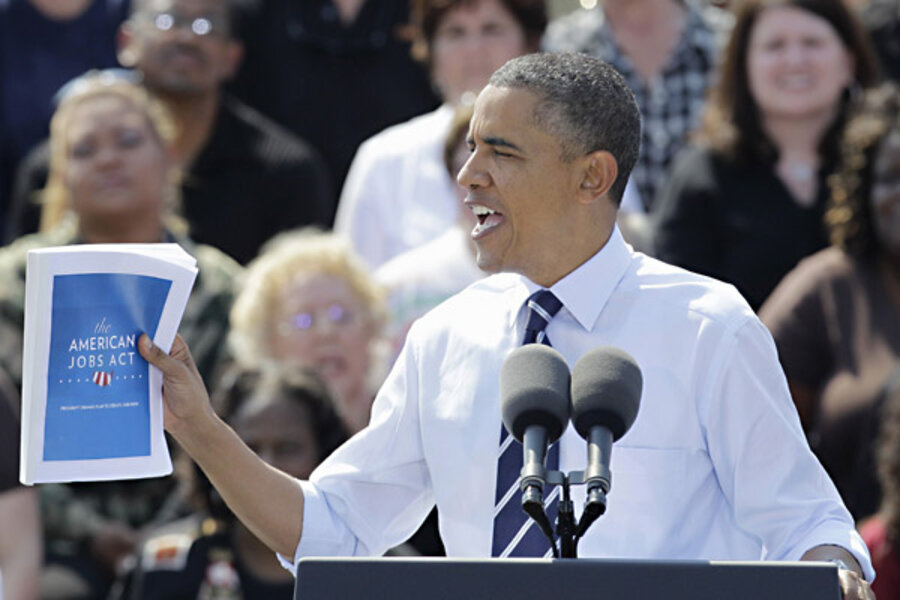Obama's cap on tax deductions: not what it seems
Loading...
It turns out that President Obama’s plan to limit the benefit of itemized deductions is much more than that. Not only would it reduce tax savings for mortgages, charitable gifts, high medical costs, and the like, it would also curb tax breaks for owners of municipal bonds, workers who buy health insurance, and those who earn money overseas.
The $400 billion plan is the centerpiece of Obama’s $467 billion package of tax increases aimed at paying for the stimulus package he announced on Sept. 8. It would limit to 28 percent the value of many tax preferences for those whose adjusted gross income is more than $200,000 ($250,000 for couples). Today, these tax breaks are worth 35 cents on the dollar for someone in the top tax bracket. Under Obama’s plan they would be worth just 28 cents.
The plan is often described as a cap on itemized deductions but in fact aims at a number of other politically popular tax breaks as well, including several exclusions that reduce the amount of income subject to tax.
An across-the-board cap on the benefit of deductions and the like is often seen as rough justice—a way to tackle the Revenue Code’s trillion dollars in tax expenditures without fighting over each one. The theory: It is an easier political lift to curb such popular breaks as the mortgage interest deduction through a broad reduction of all subsidies than to fight the powerful housing industry head-on.
But Obama does pick and choose the preferences he wants to target. He nails all itemized deductions, all right, but he also goes after some–but not all–above the line deductions. Of the roughly two dozen write-offs available to those who take the standard deduction, Obama targets just eight, including health insurance for the self-employed, medical savings accounts, health savings accounts, and some higher education expenses.
He also reduces the benefit of two other hot-button breaks—the tax exclusions for municipal bond interest and the value of employer-sponsored health insurance. In other words, for those making more than $200,000, some muni bond interest and some of the value of their medical coverage would be taxed.
However, Obama would protect other exclusions, including those for retirement savings. Picking winners and losers this way is likely to defeat any claims of rough justice and make passing the plan that much tougher.
And on the merits, some of his choices are dubious. For instance, nearly all mainstream economists believe Congress should fix the tax treatment of health insurance costs. Today, the income tax exclusion perversely gives the biggest benefit to those who make the most money and the smallest to those who earn the least and need the most help paying for insurance.
Obama could have proposed a tax credit that would boost the insurance subsidy for low-wage workers while cutting it for those at the top of the food chain. But he didn’t do that. He’d still protect the big fat subsidy for those making up to $200,000 but give no extra help to those who really struggle to pay their insurance premiums (I guess they’re supposed to use their new payroll tax cut).
That’s just one odd choice among many. The President deserves props for finally laying out the specifics of a tax plan. But now that I see them, I wish he’d made some different choices.





